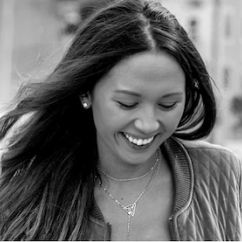Articles and News
The Five Biggest Opportunities For The Diamond Market In 2020 | December 18, 2019 (0 comments)

New York, NY—As findings from the latest De Beers Diamond Insight Report have shown for the past few years, the diamond jewelry market is undergoing profound change. Read Part I and Part II of this series for details, but to recap:
- Traditional marriage has evolved from a cultural imperative to more of an optional choice.
- The evolving nature of romantic relationships is re-shaping diamond consumption habits.
- De Beers no longer uses the term “bridal” category; instead, engagement and wedding rings are part of a larger “commitment jewelry” category.
- Average spend on an engagement ring has declined from $3,700 in 2013 to $3,400 today.
- Engagement rings are increasingly likely to be comprised of multiple smaller stones than a single large stone. Only one-third of rings in the latest study had a main stone above one carat.
- 52% of diamond jewelry gifts are still “love gifts” but cohabiting women are more likely to receive diamond earrings or necklaces/pendants.
- Non-bridal diamond jewelry gifts from men to women account for more sales than bridal.
- More women are paying for their own engagement and wedding jewelry.
- De Beers’ annual research includes same-sex couples for the first time.
- Responsible, ethical, and “earthy” preferences shape consumers’ diamond choices.
Related: De Beers Diamond Insight Report 2019: More Changes Coming
Change is always unnerving but it also brings opportunity for growth. Here are some of the key areas of opportunity cited in the 2019 Insight Report:
- Branded diamond jewelry has gained market share by value, from 29% of total market value in 2015 to 41% in 2017. Unbranded diamond jewelry continues to remain an important and stable part of the market in terms of units, but the value share has declined slightly in recent years.

- Cohabiting women want diamond jewelry gifts as much as married women do, but the kinds and reasons why they receive it are different. Those who are or eventually intend to marry are more likely to receive a gift that marks a relationship milestone, whereas those who don’t intend to marry receive a gift simply as an expression of love or commitment.


- Societal acceptance of same-sex marriage has had significant impact on the diamond gifting market. 29 countries now have legalized same-sex marriage and, in the United States, 4.5% of adults—11.3 million people—identify as LGBT+. To put that in context, that’s double the percentage of people in the United States who identify as Jews (2% of U.S. population)—and in real numbers, there are almost four million more LGBT Americans than Jewish Americans. Same-sex couples tend to skew younger, have a higher than average income, and are more likely to be college educated—all of which are prime demographics for diamond buyers.
- Among all LGBT couples, an average of 39% of diamond gifting is for engagement. Broken out, the number rises to 54% for female couples, and drops to 25% for male couples. The second-most popular reason is an anniversary (most popular for male couples), and third most likely occasion is a birthday; again, more likely among male couples than female couples.
- Engagement and wedding rings are very important to same-sex couples, but they don’t always feel welcome or comfortable in the retail space. Not surprisingly, they favor stores with ties to the community or where they know they’re going to find what they’re looking for, and diamond jewelry advertising that features same-sex couples (Tiffany, Blue Nile, Forevermark, DPA), is very welcome.







